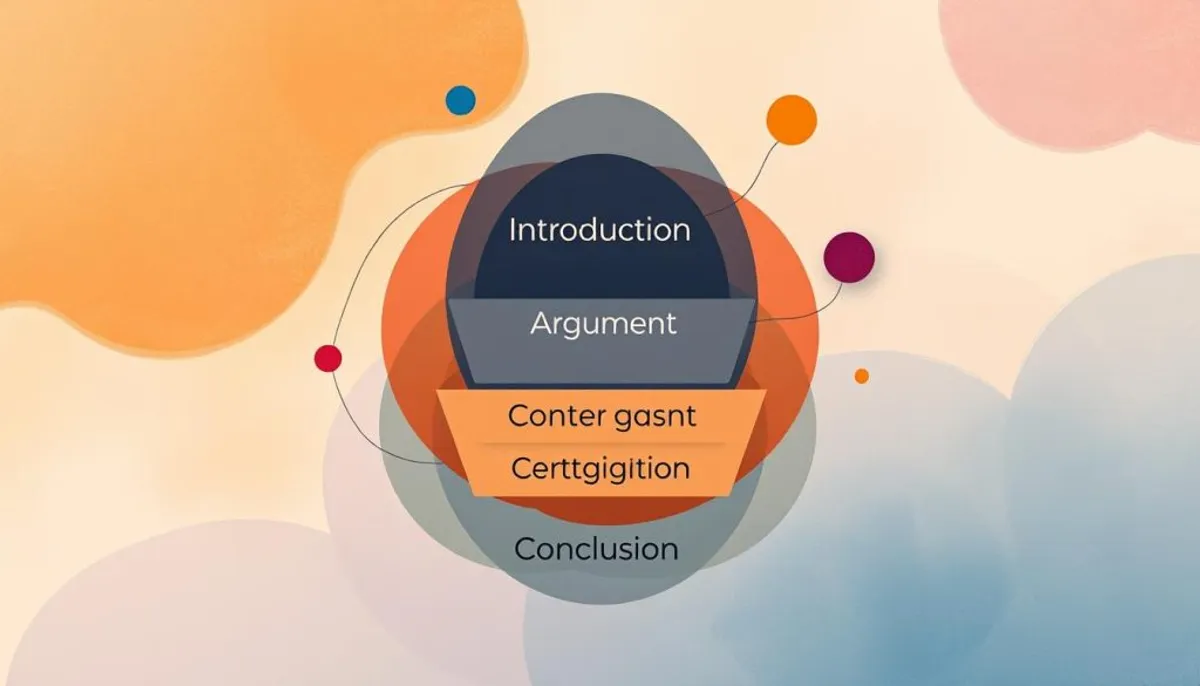The essay writing in general culture represents a major challenge for high school students preparing for the French baccalaureate. This test, essential to the French exam, requires a methodical approach and a solid foundation of personal knowledge. This easy guide will walk you through this dissertation exercise.

The general culture essay takes place over two hours. Candidates must produce a text of about one and a half pages. They respond to a question related to the text contraction topic. Structure and argumentation are crucial for evaluation by the examiners.
To excel, it is crucial to master time management. Allocate about 30 minutes for analyzing the topic and planning. Then reserve 1 hour and 15 minutes for writing, ensuring a balance between introduction, development, and conclusion. The last 15 minutes are essential for proofreading and corrections.
The quality of expression and the depth of cultural references are essential. Use your personal knowledge by linking it to the topic. A strong argumentation and a logical progression of ideas will convince the examiner, ensuring you an excellent grade in this French baccalaureate test.
Understanding the essence of the general culture essay
The general culture essay represents a deeply stimulating intellectual exercise. It requires in-depth reflection and limitless creativity. The definition of the essay covers several essential aspects for its success.
Definition and main characteristics
An essay is a written composition where the author presents their ideas on a specific topic. It is characterized by a logical argumentation, a personal style, and the integration of relevant examples. The ideal length ranges from four to six handwritten pages, without exceeding eight pages.
Difference between the essay and other types of writing
In contrast to other forms of writing, the general culture essay requires an analytical and critical approach. It is not merely about summarizing information, but about defending a reasoned point of view. The essay is distinguished by its three-part structure: introduction, development, and conclusion.
Essential evaluation criteria
The evaluation criteria of an essay examine several aspects:
- The quality of the argumentation
- The relevance of the examples
- The coherence of the structure
- The clarity of expression
- The originality of the reflection
Particular attention is paid to transitions between sections. They must ensure the fluidity of reasoning. Dense and well-structured copies are valued, avoiding unnecessary repetitions, while highlighting the importance of Quebec art.
How to write a general culture essay
To excel in a general culture essay, it is imperative to master specific techniques. Analyzing the topic, structuring the essay, and argumentation are the foundations of quality writing.
Effectively analyze the topic
The first crucial step is analyzing the topic. It is essential to identify the keywords and grasp the issue. This approach allows determining the axes of reflection and targeting relevant cultural references.

Structure your arguments
The structure of the essay plays a determining role. A well-designed plan, including an introduction, development in two or three parts, and a conclusion, is advisable. Each section should present an argument, supported by concrete examples.
Use relevant references
The integration of varied cultural references strengthens the argumentation. It is crucial to select precise examples that are directly related to the topic. These references should be smoothly incorporated into the text.
| Part of the essay | Content | Recommended time |
|---|---|---|
| Topic analysis | Identification of keywords, understanding of the issue | 30 minutes |
| Essay structure | Development of a detailed plan | 45 minutes |
| Writing | Development of arguments, integration of references | 1h30 |
| Proofreading | Correction of mistakes, checking coherence | 15 minutes |
The perfect structure of the introduction
The introduction of the essay is fundamental to the success of your reflection. It must capture the reader's attention and lay the groundwork for your argumentation. To achieve this, it is essential to structure it in three key steps.
The hook
The hook must be captivating and directly related to the topic. It can be a quote, a current event fact, or a relevant anecdote. For example, to address social order, a quote from "Brave New World" by Aldous Huxley can be particularly enlightening.
The issue
The issue is the heart of your introduction. It should pose the central question of your essay. To formulate it, it is crucial to identify the main stakes and transform them into a complex question.
The plan announcement
The plan of the essay should present the structure of your argumentation. It unfolds in three questions that will guide your development. Ensure that these questions flow logically and cover the essential aspects of your issue.
| Element | Function | Recommended length |
|---|---|---|
| Hook | Capture attention | 2-3 lines |
| Issue | Pose the question | 5-6 lines |
| Plan | Announce the structure | 4-5 lines |
By adopting this structure, you will establish the foundations of a solid and coherent essay. It is crucial to devote sufficient time to this step. It determines the direction of your entire work.
Writing a convincing development
The development of the essay constitutes the pivot of your argumentation. To achieve this, divide it into two or three well-balanced sections. Each section should expose a major idea, supported by robust arguments and significant examples.

The structure of the development plays a crucial role in the effectiveness of your argumentation. Start each section with a strong argument, followed by concrete examples. Avoid starting with a reference. To enrich your argumentation, integrate varied sources, such as philosophy, literature, or art.
It is imperative to confront at least two documents in each section. Briefly present the sources upon their first citation. Use logical connectors to ensure the fluidity of your text and demonstrate the progression of your ideas. By exploring Belfort culinary art, you can enrich your analysis with concrete examples.
For an optimal copy, integrate between 6 and 14 references in total, limiting to one or two per section. Highlight the titles of works and ensure spelling accuracy. A well-structured development can include questioning to demonstrate your ongoing reflection.
Techniques for a solid argumentation
A solid argumentation is essential for a successful general culture essay. To convince, it is crucial to master the argumentation techniques. These techniques must be applied with great precision.
The use of examples
Relevant examples play a key role in reinforcing your arguments. It is important to carefully select those that illustrate your points. For example, to address the topic "Can we not like anything?" from ECRICOME 2022, cases of misanthropy or extreme apathy may be relevant.
The integration of cultural references
Cultural references are essential to enrich your argumentation. They demonstrate your depth of knowledge and reinforce your ideas. Integrate literary works, historical facts, or philosophical concepts related to your topic.
The logical progression of ideas
A logical progression is fundamental for coherent argumentation. Organize your ideas so that they flow naturally. Start with simple arguments, then complicate them throughout the essay.
| Technique | Objective | Example |
|---|---|---|
| Use of examples | Illustrate arguments concretely | Cite real cases or hypothetical situations |
| Integration of cultural references | Reinforce the credibility of the argumentation | Mention literary works or philosophical concepts |
| Logical progression of ideas | Ensure the coherence of reasoning | Structure the essay from simplest to most complex |
Conclusion
The essay conclusion represents a decisive moment in the process of cultural reflection. It should encapsulate the essential arguments, in 4 to 6 lines, to provide a direct answer to the posed question. It is a unique opportunity to synthesize key ideas and demonstrate their relevance.
It is imperative not to introduce new ideas in the conclusion. Its objective is to recap the crucial points and demonstrate their link to the initial question. A well-written conclusion reinforces the unity of your argumentation, leaving an indelible impression on the reader.
To structure your conclusion, start with a word or phrase that marks the end of your reflection. Then, succinctly summarize the main ideas. The plan announcement is essential to guide the reader. End with a concise answer to the initial issue. This structured approach will allow you to conclude persuasively and convincingly.
RelatedRelated articles


